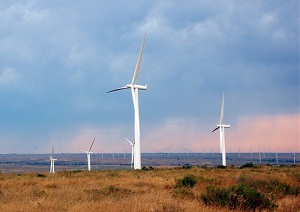Bonneville's retired vice president talks solar, part 2
 While Oregon is primarily a hydroelectric powered state, it also has a fair share of wind—about 4 percent of the nation’s total wind generation. And it could benefit from more renewable diversification—i.e. solar, explained Paul Norman, recently retired senior vice president of power services at the federal Bonneville Power Administration in Oregon, which provides electricity to many western states.
While Oregon is primarily a hydroelectric powered state, it also has a fair share of wind—about 4 percent of the nation’s total wind generation. And it could benefit from more renewable diversification—i.e. solar, explained Paul Norman, recently retired senior vice president of power services at the federal Bonneville Power Administration in Oregon, which provides electricity to many western states.
Norman also is a board member with Bonneville Environmental Foundation, which supports renewable energy and watershed restoration projects.
“In the long run, it could be helpful out here to have your renewable generation base a little more diverse, and that’s a promise solar has down the road,” he said.
The role of solar in Oregon will compliment both the wind and hydroelectric generation already in place, according to Norman. He explained that the near future of new energy development will continue to include wind and hydroelectric.
“There’s a little more hydroelectric to develop,” he said. “That’s not going to be the big new resource. It’s going to continue to be a huge resource, but it’s not going to grow that much. I think wind is going to continue to grow. Its economics are currently much better than solar. Hopefully solar is going to come on and be a big contributor.”
That’s partly because the majority of wind power in the state is located in one area, the Columbia River Gorge, which has no shortage of hydroelectric plants.
“Wind, by its nature, goes on and off, but out in the plains where it’s spread out over hundreds and thousands of miles, it’s unlikely that all the wind turbines are going to go on and off at once,” he said. “But here it’s much more volatile, they’re much more all-on or all-off, and that creates a much bigger challenge to manage, so you have to have the rest of the power system flex around the wind.”
With 3 gigawatts of wind concentrated in one area and large hydroelectric dams, the state’s energy mix already is experiencing some growing pains.
“It’s getting to the point where at nighttime—at certain points of the year—if the wind’s blowing, we’re getting more power generated by the wind plus the minimum hydro than there is load,” he said. “So Bonneville, just this past spring, had to give massive amounts of power away just to find enough load to absorb all this power that was being generated.”
Norman said one way to fix this would be to spread out the wind turbines. But that’s just one potential solution.
“Another solution is solar,” he said. “Where you supplement your wind base with solar, which isn’t going to be generating on the exact same cycle as wind. And I don’t think there’s a huge correlation between when the wind blows and when the sun shines.”
Adding more solar to Oregon’s electricity generation mix will help reduce the need for more flexibility demanded of the state’s hydroelectric dams.
You can read Norman's previous interview here.



